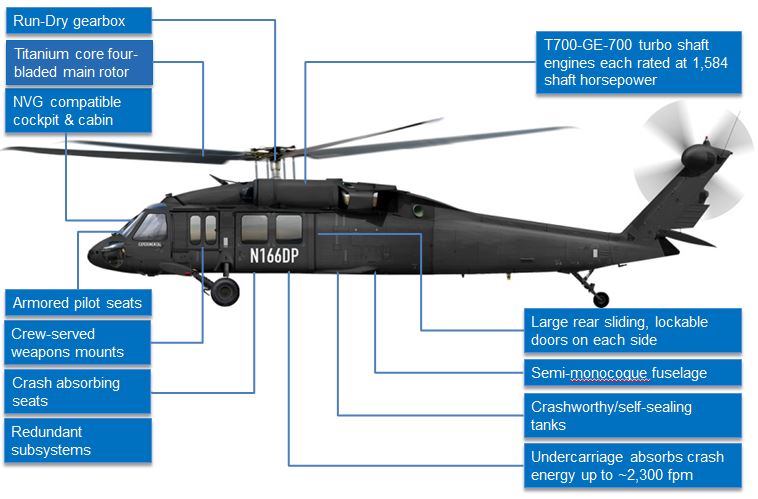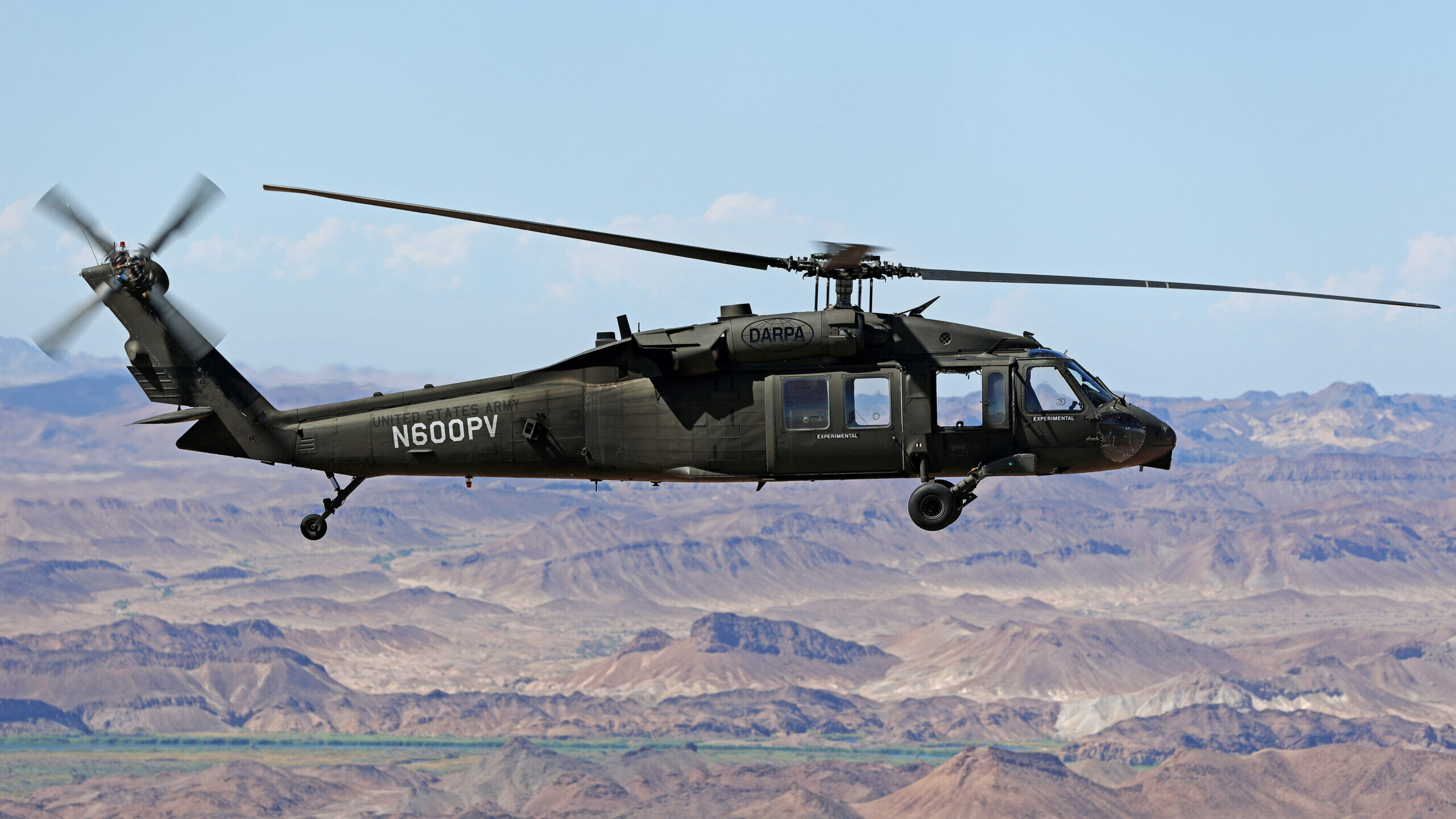Breaking Down the UH 60's Effect on Global Defense Methods and Operations
Breaking Down the UH 60's Effect on Global Defense Methods and Operations
Blog Article
Learn More About the Versatility of the UH-60 Aircraft
The UH-60 aircraft stands as a testament to design quality, showing impressive convenience across a range of humanitarian and military operations. Its design enables smooth shifts between several roles, from army transportation to clinical emptying, all while geared up with advanced modern technology for optimum efficiency in difficult environments. As we discover the historic context of the UH-60 and its progressing applications, it ends up being clear that its significance expands much beyond traditional duties, triggering a closer examination of its future possibility in modern aviation and protection methods. What lies in advance for this famous aircraft?
Background of the UH-60
The UH-60 Black Hawk helicopter has a storied history that mirrors developments in military air travel and the progressing needs of the U.S. Army. Originally developed in the late 1960s by Sikorsky Aircraft, the Black Hawk was made to change the older UH-1 Iroquois, typically understood as the "Huey." The helicopter made its first flight in 1974 and was officially presented right into solution in 1979.
The Black Hawk was developed to fulfill the Army's requirements for a tactical transport helicopter efficient in bring soldiers and materials in a selection of functional settings. Its layout stressed resilience, speed, and maneuverability, making it suitable for a vast array of missions. The helicopter's advanced blades system and avionics dramatically boost its efficiency compared to its predecessors, enabling it to run properly in damaging climate condition and at high altitudes.
Over the years, the UH-60 has actually undertaken many upgrades and adjustments, ensuring its importance in modern-day war. Consequently, it has actually come to be a sign of flexibility and reliability, offering in different capabilities, consisting of medevac, logistics, and unique operations, both locally and worldwide.
Armed Force Applications
Recognized for its adaptability, the UH-60 Black Hawk offers a wide variety of army applications that prolong far past its initial style as a tactical transport helicopter. Its durable airframe and progressed avionics make it a necessary asset in different operational functions.
One of the key armed forces applications of the UH-60 is its usage in troop transportation, with the ability of lugging as much as 11 soldiers or a combination of workers and cargo. This adaptability is even more boosted by its ability to perform medical emptying missions, allowing quick reaction to battlefield injuries with onboard medical employees and devices.
The UH-60 additionally plays an important function in reconnaissance and monitoring operations, equipped with advanced sensing units that provide real-time knowledge. Its capacity to operate in varied settings, including negative climate conditions and at night, boosts its effectiveness in objectives needing stealth and accuracy.

Humanitarian Goals

In recent times, the UH-60 Black Hawk has actually confirmed important in humanitarian goals, showcasing its capability to deliver aid and support in crisis situations. Its flexibility enables for fast release in varied settings, whether reacting to all-natural calamities, condition episodes, or problems that displace populaces.
The Black look here Hawk's capability to deliver employees, clinical materials, and food is essential in emergency situation feedback circumstances. With its innovative navigating systems and robust style, it can operate in challenging problems, consisting of damaging climate and sturdy surface, guaranteeing that aid reaches those in need without delay.
In addition, the airplane's ability to carry out aerial evacuations facilitates the swift removal of hurt individuals from inaccessible locations, significantly boosting survival prices in emergency situations. This capacity has actually been demonstrated in various operations, from quake alleviation initiatives to flood rescues.
Additionally, the UH-60 functions as a system for control among multiple companies, enhancing overall performance in humanitarian operations. Its versatility and reliability make it a keystone in international alleviation initiatives, enhancing the significance of army properties in international humanitarian actions. In general, the UH-60 Black Hawk stands as a crucial device in dealing with immediate human demands.
Technical Developments
Countless technical innovations have improved the capabilities of the UH-60 Black Hawk, making it best site a premier platform for army and humanitarian operations. One substantial development is the assimilation of advanced avionics, which consists of electronic flight controls and improved situational recognition systems. These innovations boost pilot efficiency and mission efficiency, permitting for safer navigation in intricate settings.
The aircraft's robust interaction systems make it possible for real-time data sharing among systems, boosting control during objectives. Furthermore, the unification of composite materials in the airframe decreases weight while boosting durability, leading to enhanced gas performance and payload capacity.
The UH-60 also features innovative rotor systems that provide exceptional lift and maneuverability, allowing it to run in varied problems, consisting of high elevations and severe temperature levels. The incorporation of modern-day sensing unit modern technology enables for enhanced reconnaissance and target recognition, making the aircraft versatile in combat and non-combat scenarios.
Lastly, the capability for modular mission equipment installment makes certain that the UH-60 can be swiftly adjusted to satisfy details functional requirements, strengthening its role as a vital tool for military and altruistic initiatives alike. These technologies jointly solidify the UH-60 Black Hawk's reputation as a modern airplane.
Future of the UH-60

Future iterations of the UH-60 will likely feature sophisticated materials and layouts that improve durability while reducing weight, boosting performance and gas efficiency. The assimilation of artificial knowledge and artificial intelligence will certainly promote better situational recognition and decision-making capacities, inevitably boosting objective success prices. Additionally, continuous upgrades to communication systems will guarantee seamless interoperability with various other systems and allied pressures.
With the increasing focus on multi-domain procedures, the UH-60's adaptability will enable it to sustain a variety of objectives, from troop transportation to clinical evacuation and reconnaissance. Additionally, the possibility for unmanned variations or improved automation could better broaden its operational capabilities.

Verdict
The UH-60 aircraft shows outstanding convenience across numerous operational contexts, strengthening its function in military and altruistic efforts. UH 60. Its flexibility to several goals, integrated with innovative technological technologies, guarantees optimum performance in varied environments. As the Clicking Here needs of modern-day warfare and situation response progress, the ongoing advancement of the UH-60 will certainly be essential. This airplane's sustaining importance in army aviation highlights its essential contribution to tactical protection and emergency situation operations.
The UH-60 airplane stands as a testimony to design quality, demonstrating remarkable adaptability throughout a range of altruistic and army operations.The UH-60 Black Hawk helicopter has a storied history that reflects developments in armed forces air travel and the progressing demands of the United state Military. Generally, the UH-60 Black Hawk stands as an essential device in resolving urgent human needs.
Numerous technological developments have improved the capacities of the UH-60 Black Hawk, making it a premier system for military and humanitarian operations.The UH-60 aircraft demonstrates extraordinary versatility throughout various operational contexts, solidifying its role in military and humanitarian efforts.
Report this page